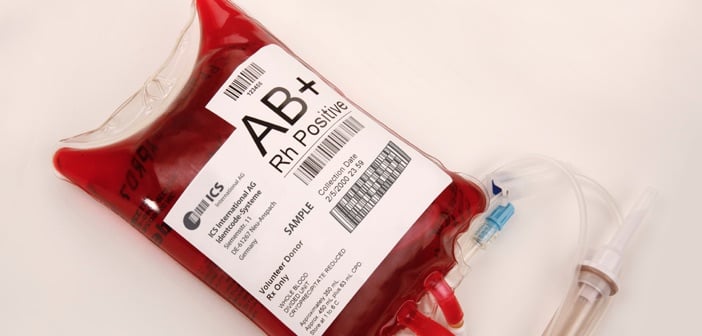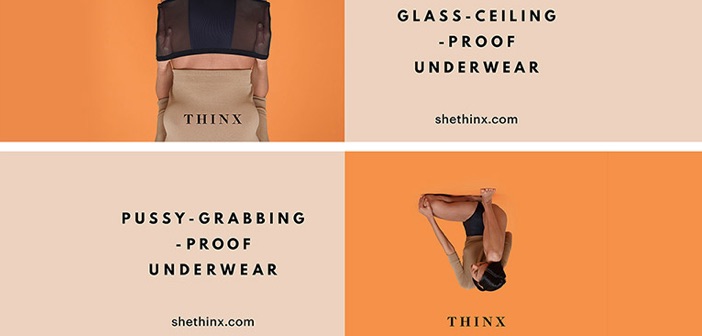A Bloody Waste | Eco-Friendly Periods
Writer’s note: In this article we may refer to women or girls, but we’d like to acknowledge that some trans males as well as some intersex and non-binary people also menstruate, and that dialogue about menstrual products and related topics do not only affect cis females!
Let’s face it: sanitary products, such as tampons and sanitary pads, have a pretty bad reputation. They’re notorious for contributing to the world’s landfills, they’re surrounded by controversy around health risks and toxic ingredients, and they’re a major thorn in the side to achieving economic equality around the globe. And yet, talking about them is generally a no-no, lest it be considered inappropriate, disgusting, or T.M.I. But can there really be such a thing as too much information when it comes to something that’s causing so many problems for our planet and the people on it?
Thankfully, these products have been receiving increasing attention with regards to their environmental, economic, and social impact. From the hippie dippie mumsnet crew, penny-pinchers, and students, right up to startups, think tanks, and NGOs, folks around the world are concerning themselves with eco-friendly periods and how to make period care more accessible and more acceptable to talk about.

Let’s first consider the environmental impact. Disposable tampons, pads, and liners generate hundreds of thousands of tonnes of waste every year, most of which ends up in landfill. Many of these products are made with plastic-based materials, such as polyester or polypropylene, which cannot biodegrade. The plastic applicators that accompany many tampons are especially problematic when it comes to their disposal, and the plastic backing and inner elements of most sanitary pads mean that they, too, are destined for landfill. Even the environmental cost of the cotton is high with unsustainably large amounts of water, pesticides and fertiliser used in cotton production. While there are ‘eco-friendly’ products out there, such as Natracare’s 100% organic cotton tampons, these will only biodegrade if they are composted – something that most people don’t do for their vegetable scraps, let alone their tampons. Considering that the average woman will use approximately 11,000 tampons in her life, that’s a lot of bloody waste.
Another way in which sanitary products create a problem for the environment is through the flushing of tampons and pads down the toilet. Think Before You Flush is a public awareness campaign operated by An Taisce’s Clean Coast programme. It seeks to inform people of the damage caused to marine environment and waste water systems as a result of improper disposal of many common bathroom products. A survey of over 1000 Irish adults found that tampons, applicators, and sanitary pads accounted for 35% of items incorrectly disposed of, with 3 in 10 participants admitting they have flushed such products down the toilet. A build up of this kind of debris – along with other things like wet wipes, condoms, and dental floss – can lead to entire sewage systems becoming clogged, a problem which costs councils and governments millions to clean up.
Speaking of money, there’s also the cost of these products to the individual. A box of tampons or sanitary pads costs on average between three and five euros; multiply that for every month, 12 months a year, for 30 odd years, and you’re looking at up to €1800 over the course of a lifetime spent on menstrual products. Although in Ireland these products are (thankfully) not taxed, many countries impose a tax anywhere from 5 to 20 percent on tampons and sanitary pads, making these essential items even less affordable for many individuals and families. In developing countries, the high price of imported sanitary products and a lack of education around menstrual health management means that millions of young girls regularly miss school due to their periods. Here at home, at-risk individuals, such as those living in poverty and the homeless, often do not have access to sanitary products. There are an estimated 1000 women sleeping rough in Dublin every night; for many who struggle to find food and shelter, personal hygiene products are a ‘luxury’ they simply cannot afford. Charities such as The Homeless Period distribute sanitary items to homeless people that need them, but ultimately, organisations like this are reliant on continued donations of these products; a model that is neither economically nor environmentally sustainable.
Fortunately, these problems are not going unnoticed. As the personal care industry adapts to growing concern about the negative impact of disposables, alternatives are becoming more widely available to suit all comfort levels and budgets. Menstrual cups, such as the Mooncup, have become quite popular in recent years due to the environmental and financial savings they provide. These medical-grade silicone cups collect menstrual flow as opposed to absorbing it, and after being emptied and cleaned, can be used again and again. Costing around €30, the upfront cost is higher than their disposable counterparts, but it’s a long-term investment: one cup can last up to 5 years, making it both a cost-effective and less wasteful option.
In terms of external products, cloth sanitary pads – or CSPs as they are often called – are also growing in popularity. Companies such as GladRags or LunaPads offer cloth pads and liners in a range of sizes, styles, and absorbencies, which can be washed in the machine at 60 degrees to be reused over and over. In Ireland, websites like Fluffybums and Earth Mother, originally set up to sell natural and environmentally-friendly baby products like cloth nappies and wet bags, have tapped into the eco-family market by extending their offerings to include cloth sanitary pads as well as sea sponges (a natural alternative to tampons). For those already using cloth products for their children, many feel it’s only logical to switch to reusable products for themselves, too. With prices hovering around €15 for a set of three cloth pads, the long-term savings to be made here, too, are huge. Many people even make their own reusable pads, with CSP Facebook groups, Etsy stores, and other DIY communities being set up by entrepreneurial and savings-savvy individuals around the world.
As new-agey and unconventional as these alternatives may seem, neither are, in fact, new ideas. Menstrual cups were first patented in the 1930s, but only saw mainstream success towards the end of the 1980s, and using cloth or other absorbent materials to manage menses is a practice that dates back as far as ancient times, with rags, wool, or even papyrus being used. In many ways, the menstrual revolution is nothing more than going back to basics. Indeed, one of the most primitive methods of period management has been making a lot of noise in recent years — freebleeding. For many, this word has strong political connotations, conjuring up imagery of angry feminists in blood-stained clothing wielding anti-tampon tax placards. While freebleeding has indeed been used as a form of protest or means of raising awareness, its prevalence in contemporary society is actually a lot more commonplace than most people realise, though it’s usually anything but deliberate. Accidentally bleeding through underwear or clothing is an embarrassing and often stressful predicament, but it’s a reality of menstruation that most have faced at least once: from the 13-year-old who just got her first period, to the middle-aged professional caught off-guard at work with no supplies.

This universally-experienced quandary, faced by half the world’s population, was one of the central inspirations behind the development of Thinx, a range of ‘period underwear’ launched by Miki Agrawal in 2014. Agrawal noticed that there had been very little innovation in the area of menstrual products, and began to ponder the question: “Why are women still leaking and staining and having accidents?”. After several years of textile development, Agrawal and her team perfected their performance underwear, which has already gained a cult following. Thinx underpants can hold up to two tampons’ worth of blood, are machine-washable, and contain antimicrobial properties to help keep things healthy and odour-free. They’re designed to look and feel like regular underwear, making them a popular choice for those who dislike the bulkiness of pads or the intrusiveness of tampons or menstrual cups.
While Thinx are not the only period pants on the market – nor the first – they are certainly the most well-known, thanks to their provocatively artful advertising. Beyond just pushing their products, Thinx has a mission to fight the taboo around periods. “There’s a 1 in 12 chance that you are on your period right now, yet we rarely discuss menstruation outside of whispers woman to woman”, reads one of their ad campaigns. But this brazen critique of society is more than just marketing; Thinx — along with many of their contemporaries in the industry, such as Lunapads and PadKix — are putting their money where their proverbial mouths are, and investing in initiatives that help to empower, educate, and enable. Partnerships with organisations like AFRIpads and Pads4Girls, who provide low-cost washable cloth pads to developing communities around the world, aim to keep girls in school and help smash the stigma around menstruation that ostracises women from society during her period. These progressive companies are also working to tackle taboos in the developed world, too, publishing educational blog posts and newsletters on all manner of menstrual health topics, as well as more general advocacy in support of feminist causes like reproductive rights and girls’ education.
Between saving the planet and saving lives, the impact of changing attitudes around period products is not to be underestimated. As individuals, whether we use these products or not, there is a lot we can do to carry on the conversation. Consider switching to reusable products, or tell a friend about them. Donate to one of the great organisations working to make period care more accessible. Or simply share this article to help normalise this normal part of life and make it more earth- and human-friendly!
